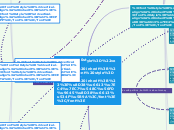Trade Organisations and International Trade Agreements
Trade Organisations
European Union(EU)
a political and economic union of 28 member states that are located primarily in Europe.
The EU has developed an internal single market through a standardised system of laws, aim to ensure the free movement of people, goods, services and capital within the internal market,
Brexit is a word that stands for UK leaving the EU. It was happened because a vote in which everyone of voting age can take part.
APEC
Asia-Pacific Economic Cooperation (APEC) is an inter-governmental forum that promotes free trade throughout the Asia-Pacific region.
There are totally 21 members in this forum, including Australia, Canada, China etc.
most (but not all) summits had a special tradition--- the attending leaders dressing in a national costume of the host country.
ASEAN
The Association of Southeast Asian Nations (ASEAN) is a regional intergovernmental organization comprising 10 Southeast Asian countries, including Brunei Darussalam, Cambodia, Indonesia etc.
which promotes intergovernmental cooperation and facilitates economic, political, security, military, educational, and sociocultural integration among its members and other Asian states.
Mercosur
It's officially named Southern Common Market, which is a South American trade bloc.
Its full members are Argentina, Brazil, Paraguay and Uruguay.
Mercosur's purpose is to promote free trade and the fluid movement of goods, people, and currency.
It once negotiated a trade deal with the EU.
WTO
The World Trade Organization (WTO) is an intergovernmental organization that regulates international trade.
Its major areas include trade negotiations, implementation and monitoring, dispute settlement and building trade capacity for developing countries around the world.
A Research shows that in the absence of the WTO, the average country would face an increase in tariffs on their exports.
G7
The Group of Seven (G7) is a group consisting of Canada, France, Germany, Italy, Japan, the United Kingdom, and the United States. Canada joined it in 1976
The members in G7 are the seven largest advanced economies in the world.
G8
Russia was added to the political forum from 1997, which the following year became known as the G8. However, in 2014, G7 members cancelled Russia's membership.
G20
The Group of Twenty(G20) is an international forum for the governments and central bank governors from 19 countries and the European Union.
The members of it include Brazil, Canada, China, Australia etc.
Its main purpose is to Bring together systemically important industrialized and developing economies to discuss key issues in the global economy.
IMF
The International Monetary Fund (IMF) is an international organization headquartered in Washington, D.C., consisting of 189 countries.
To prevent the financial crisis, the IMF is working to fill data gaps that important for global stability.
It has 3 aspects of function.
Overseeing the fixed exchange rate arrangements between countries,
Allowing these governments to prioritise economic growth.
Providing short-term capital to aid the balance of payments.
On June 4, 2018, IMF recognized Canada's Success in Delivering Growth That Works for Everyone.
Future Negotiations
TISA
The Trade in Services Agreement (TISA) is a services-trade only agreement currently being negotiated by 23 Members of the World Trade Organization (WTO), including Canada.
The objective of the TISA is to strengthen rules and improve market access for trade in services.
The last negotiation was held in 2016. At present, Parties still continue to consult internally and conclude some remaining issues, such as Financial Services.
Canada is one of the world’s largest services exporters. Canada’s priorities in the TISA are to create new opportunities for Canadian services suppliers in new markets and improve the transparency and predictability of international regulation in trade in services.
CJEPA
The Canada-Japan Economic Partnership Agreement (CJEPA) negotiations were launched on March 25, 2012 by the Prime Ministers of Canada and Japan.
Under the EPA, a range of Canadian goods and services benefit from the reduction or elimination of tariff and non-tariff barriers to trade.
Trade Agreements
USMCA
A signed but not ratified free trade agreement between Canada, Mexico, and the United States.
It was based on NAFTA. Recently its name become controversial among these three countries.
The Agreement between the United States of America, the United Mexican States, and Canada
CPTPP
The Comprehensive and Progressive Agreement for Trans-Pacific Partnership
A new free trade agreement between Australia, Brunei, Canada, Chile, Japan, Malaysia, Mexico, New Zealand, Peru, Singapore and Vietnam.
It will open doors for Canadian businesses, provide enhanced market access to key Asian markets .
CETA
The Comprehensive Economic and Trade Agreement
A progressive trade agreement that upholds and promotes the values that Canada shares with the EU.
CETA addresses everything from tariffs to product standards, investment, professional certification and many other areas of activity, and generates significant benefits for all Canadians.
CCFTA
The Canada-Chile Free Trade Agreement (CCFTA) is a comprehensive agreement that covers trade in goods and services, as well as the bilateral investment relationship.
It was Canada’s first Free Trade Agreement (FTA) with a South American country, while for Chile it was the first comprehensive FTA concluded with any country.
As the diagram shows, since its launch in 1997, the CCFTA has brought benefits to both countries.
WTO Agreement on Trade Facilitation
The WTO Agreement on Trade Facilitation (TFA), which entered into force on February 22, 2017, contains modernizing and simplifying border procedures.
It is the first multilateral agreement concluded since the creation of the WTO in 1994.
The TFA provides a new approach to implementation by developing and least-developed countries. Besides, this agreement benefits Canadian traders because it can lower trade costs.
